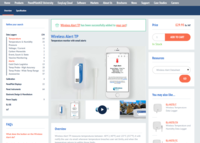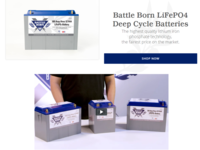Hey
@Dellmassive, completely new to the world of camper electrics (and campers for that fact, we've had our T6 about a month) so please excuse any naivety here but spent the passed couple of days trying to educate myself on this forum, as we're nearing that point of our self-build conversion and I need to get a handle on it.
Spent many hours trying to get my head round this extremely detailed & helpful post and your other diagram post. Right now as it's our first camper, we have no real world experience of our consumption profile but expect obvious 12v loads to be fridge, lights, phones etc. plus an inverter for laptops, camera batteries etc.
As we're starting from scratch with an empty panel van i.e. no legacy systems or investment in other tech, provided i find a decent size battery (thats not stating an equivalent to AGM AH) it seems like Lithium may be the sensible way to go, to future proof us for the long term, give us more useable real world AH/time between charges and quicker charging if we're only doing shorter journeys between stops.
(Caveat - we still have a decision to make on underslung LPG which could run the fridge, night heater, gas hob. This is being weighed up vs Planar diesel heater and electric everything else - i.e. fridge and induction hob which would dramatically change our usage profile - but lets set that aside for now!).
Reading the thread all was looking good, then ran into the issue of low temp / low battery cut-off's to protect the battery and suggested workarounds, which is where things started to get a little complicated. Then Renogy come along and seem to simplify everything!
So I 'think' I'm starting to make sense of it again... from what i can gather, to simplify this setup, the Renogy box means I could remove the need for the separate MPPT for the solar (rely on the Renogy built-in controller), remove the BMV Temp sensor, LBP sensor - the BM2 in your diagram is presumably a battery monitor so still needed but guess the Victron App goes as that is part of the DC-DC charger and would be replaced with the Renogy box?
Where are you up to with the Renogy box, any real world experience with it yet? If you were starting out again now, would you put that at the centre of your setup with Lithium?
Any plans to update the Lithium setup diagram to include the Renogy box and remove the technically redundant elements for clarity?
Just attempting to make sure i fully understand this before we start down the road of actually sourcing some of these bits...



